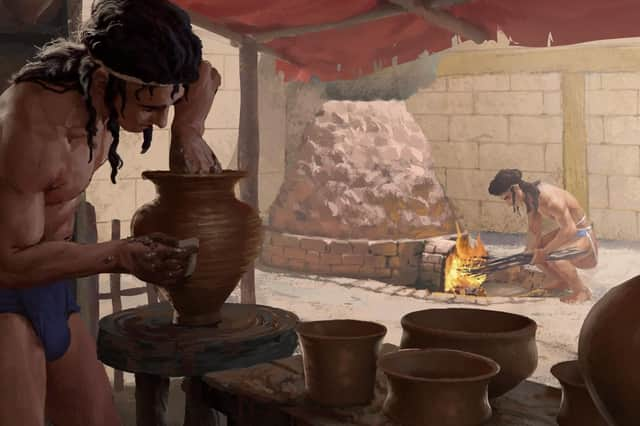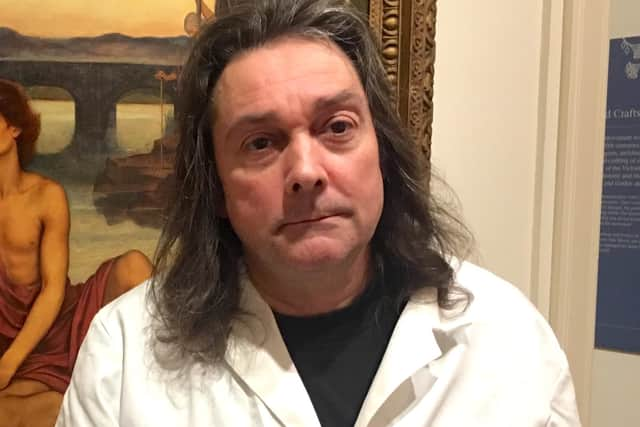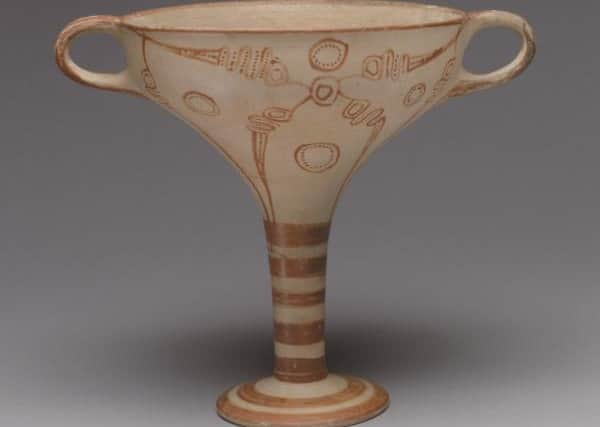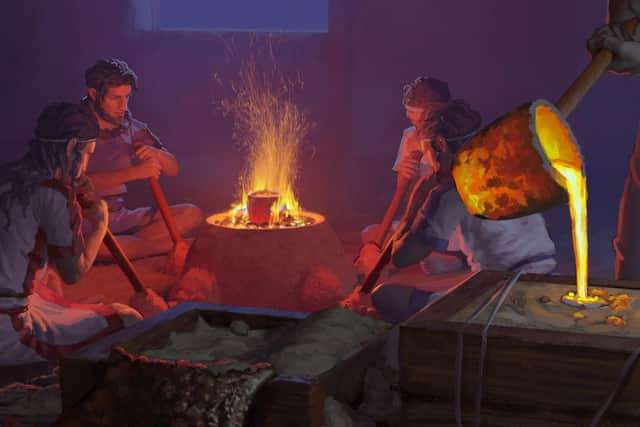Coal powered ‘industrial revolution’ 3,000 years ago


The new findings re-write the history books, writes Graham Walker.
It was thought globally the use of coal was limited until the Industrial Revolution in Britain in the mid-18th century, which marked a major turning point in history, with processes which evolved the modern world.
But an international team of 30 archaeologists - including Yorkshire's TV award winning husband and wife, Dr Stephen Buckley and Prof Joann Fletcher - have discovered that lignite, or brown coal, was used to fire up kilns and smelting furnaces in Bronze Age Greece over 3,000-years ago.
It is proof of what is believed to be the first use of coal to produce goods on an industrial scale in the western world.
The new research reveals mass production of high-quality ceramic vessels, bronzes and swords, in almost unbelievable numbers, was probably possible.
The work also discovered how lignite was mined close to the famous site of Olympia, birthplace of the original Olympic Games.
Archaeologists and chemists made the amazing new discovery almost by accident – examining the teeth of Bronze Age workers from Greece, published in a major paper in the latest journal Nature: Scientific Reports.


The findings are based on a five year study led by Professor Philipp Stockhammer of the University of Munich to better understand what people in the Bronze Age Eastern Mediterranean ate.
But examining their tartar found they inhaled soot and exhaust fumes from lignite as they sat in front of workshop fireplaces and ovens.
"We could hardly believe it at first," said archaeological chemist Dr Buckley, of Scarborough, who worked on the discovery with University of Tübingen to carry out analyses.
"Half of all the individuals we examined from both sites - both males and females - clearly had the chemical signature of lignite in their tartar.


"It means we can prove the exploitation of lignite as early as the 14th and 13th centuries BC, a good 1000 years earlier than previously thought."
Dr Buckley, a mummification expert, and his wife, Barnsley born BBC TV Egyptologist Prof Joann Fletcher, both of University of York, were part of the team which has been working on the project for five years."
Prof Fletcher added: "It is evidence for Europe' s first industrial revolution over 3,000 years ago and the earliest use of coal in the western world.
"Based on the detailed scientific analysis of deposits on their teeth, this has not only revealed what these people were drinking and eating, and how they cooked it, but what they were breathing on on a regular basis."


It's not the first time the couple have made global headlines.
Prof Fletcher identified the mummy of Queen Nefertiti and together they were also part of the team that won a BAFTA for the 2011 Channel 4 documentary Mummifying Alan: Egypt’s Last Secret, which involved mummifying taxi driver Alan Billis, to replicate rediscovered secrets of the ancient process, at Sheffield’s Medico-Legal Centre.
They are working on a world first project which has already successfully recreated the voice of Egyptian mummy Nesyamun, also known as The Leeds Mummy, using a 3D print of his voice box.
Dr Buckley, who began his journey with a Chemistry degree at the University of Sheffield, also discovered how ancient Egyptians were embalming mummies 1,500 years earlier than previously known - around 6,000 years ago.
He is carrying out forensic tests on mummy remains in 19th century paintings featuring Mummy Brown paint.